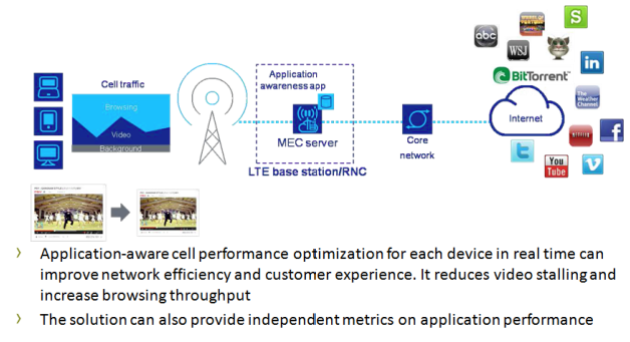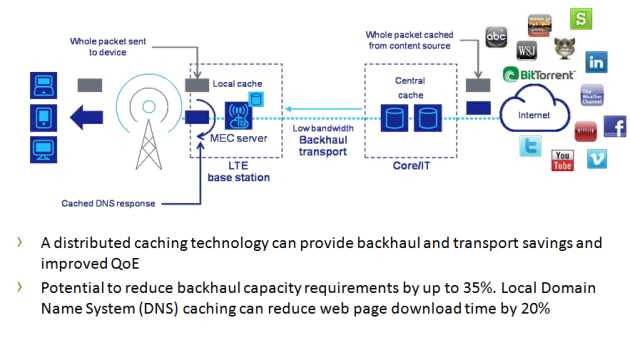 The threat of over-the-shelf services (OTTs) to wireless network operators is well established, but as of yet, there is no clear answer as to how mobile network operators (MNOs) can ward off the OTT threat. This is evident by eroding margins where many large MNOs are now standing in the 30% EBITDA margin range, down from around 50%. The introduction of data service have eroded earnings as operators went into a high capex spending cycle to upgrade networks to LTE and meet anticipated capacity demand. MNOs also embarked on aggressive strategy to acquire new spectrum for the LTE networks which is perhaps best exemplified by the recent AWS-3 auction valued at $44.9 billion. All the while, MNOs have failed at capturing much additional value from the services they provide. The path to increased profitability will have to come from a combined effort to reduce cost while at the same time increase revenues. Finding such a formula is not straight forward and various attempts taken by MNOs to ward off the threat of OTTs have so far largely failed.
The threat of over-the-shelf services (OTTs) to wireless network operators is well established, but as of yet, there is no clear answer as to how mobile network operators (MNOs) can ward off the OTT threat. This is evident by eroding margins where many large MNOs are now standing in the 30% EBITDA margin range, down from around 50%. The introduction of data service have eroded earnings as operators went into a high capex spending cycle to upgrade networks to LTE and meet anticipated capacity demand. MNOs also embarked on aggressive strategy to acquire new spectrum for the LTE networks which is perhaps best exemplified by the recent AWS-3 auction valued at $44.9 billion. All the while, MNOs have failed at capturing much additional value from the services they provide. The path to increased profitability will have to come from a combined effort to reduce cost while at the same time increase revenues. Finding such a formula is not straight forward and various attempts taken by MNOs to ward off the threat of OTTs have so far largely failed.
This is where Mobile Edge Compute can play a role. In MEC concepts, applications are run at the edge of the network, close to the user where it is possible to leverage location information, proximity to the user and network information to provide value-added services that will help the operator generate additional revenue. This is particularly the case where the customer can be ‘captive’ such as the case in public venues like stadiums and stations. Moreover, a part of the traffic generated at these locations can remain local saving the operator the expenses of backhauling data back to the core.
An interesting application of MEC is with Cloud RAN which is not an obvious connection at first glance only because Cloud RAN includes centralizing baseband functions while MEC seeks to push out processing to the radio edge. However, the two are synergistic. Cloud RAN uses general purpose processors (GPPs) to run baseband functions at a fiber or data center, or locally at the venue itself (the venue can be as simple as a macro cell site!). The same GPP platform can be used for MEC applications which run at the edge and not the core even though the edge is centralized.
Marrying-up Cloud RAN with MEC can take different shapes. One of the easiest ways to implement Cloud RAN would be at venues where fiber can be easily installed if not already present; another is by converting macro cells to data unit center mini-hubs to serve adjacent macro cells and a centralized location for small cell remote radios. In all cases, the fundamental premise is the use of GPPs and common platform architecture in wireless base stations both as a mean to save cost and to provide value added services.
The trend to use GPPs in wireless infrastructure is still at its infancy. But what is clear is that the architecture of the wireless base station is set to undergo a radical transformation in order to leverage the concepts of network function virtualization where common platform hardware is used to save cost. Already major operators are driving towards implementing NFV in the core network and it’s only a matter of time before that permeates into the radio access network. Examples include AT&T Domain 2.0 and Telefonica UNICA initiatives.
MEC is the vehicle to drive additional revenues and Cloud RAN is the road to implement MEC by leveraging GPP platforms. Market dynamics are bound to force more intelligence into the radio edge which will change the architecture of wireless infrastructure of the future.
Note: More information is available in my recent Cloud RAN market research report.

